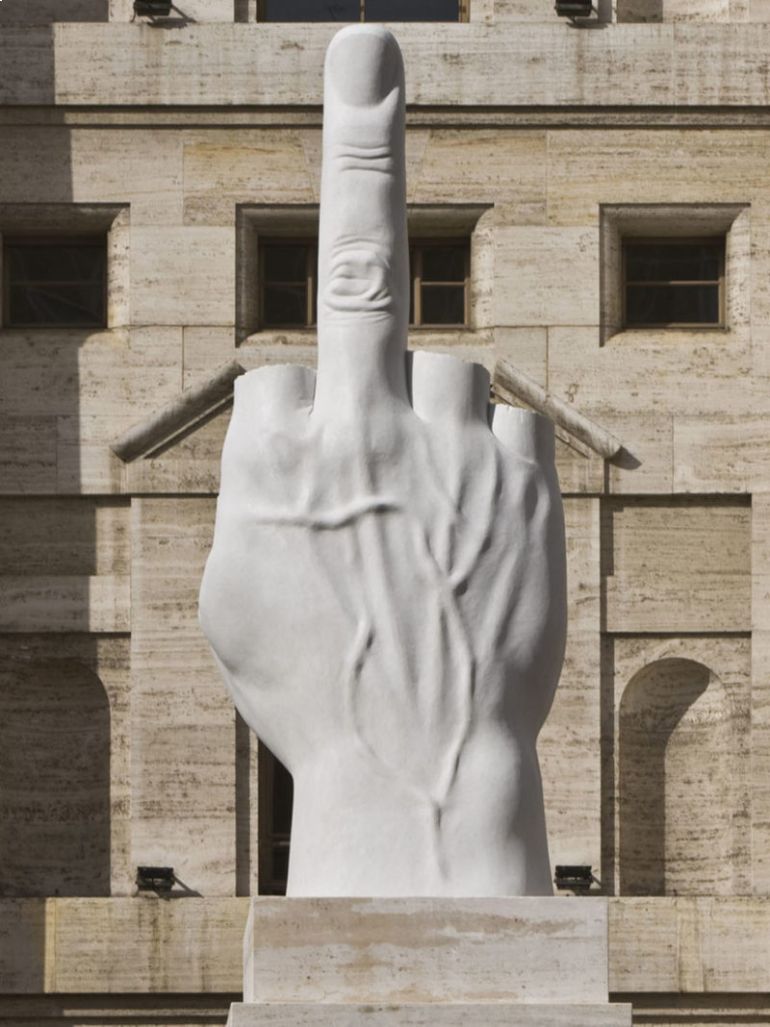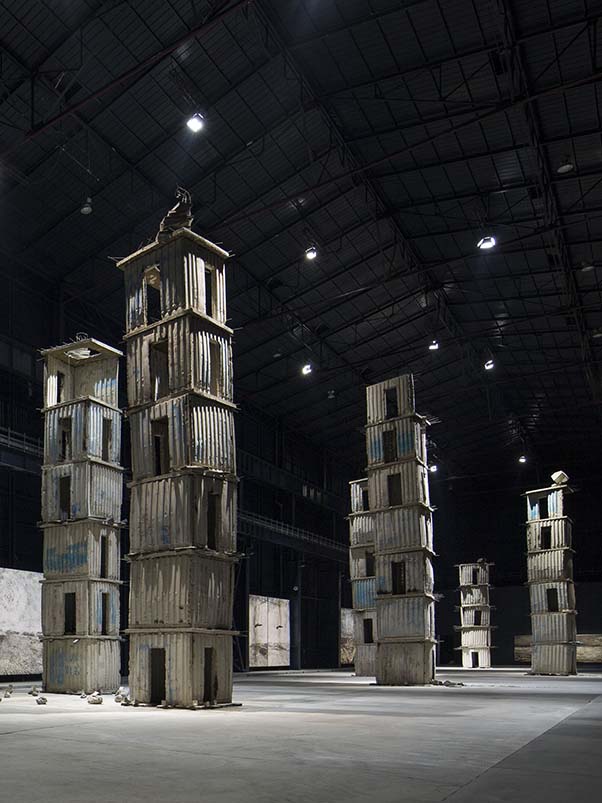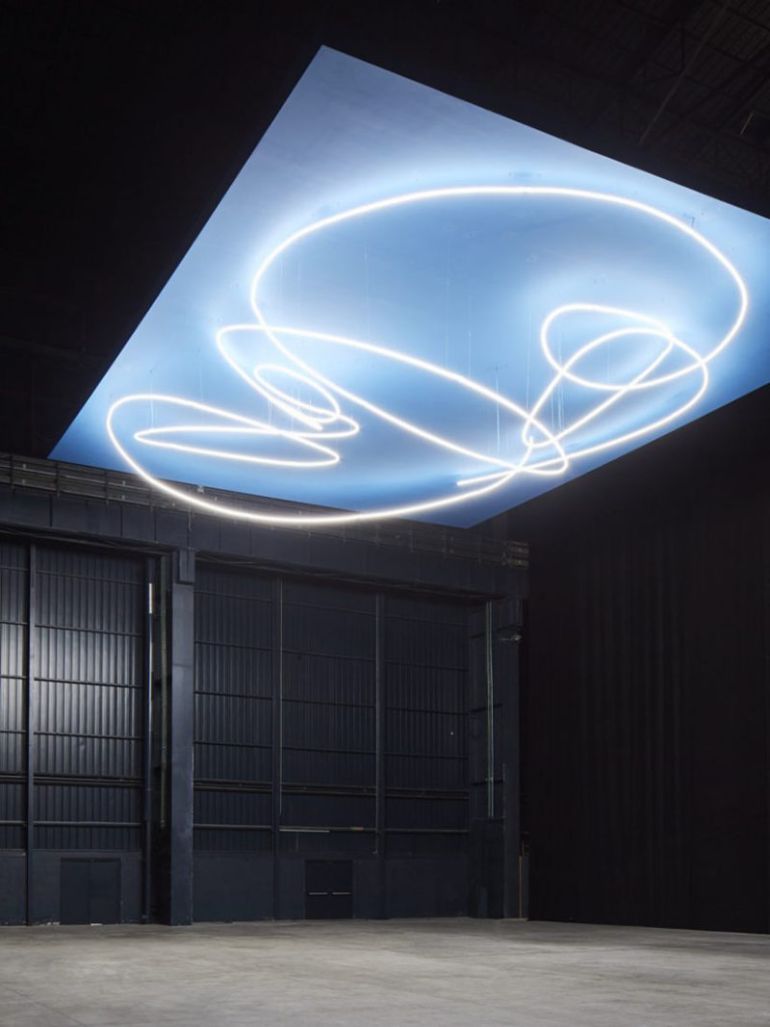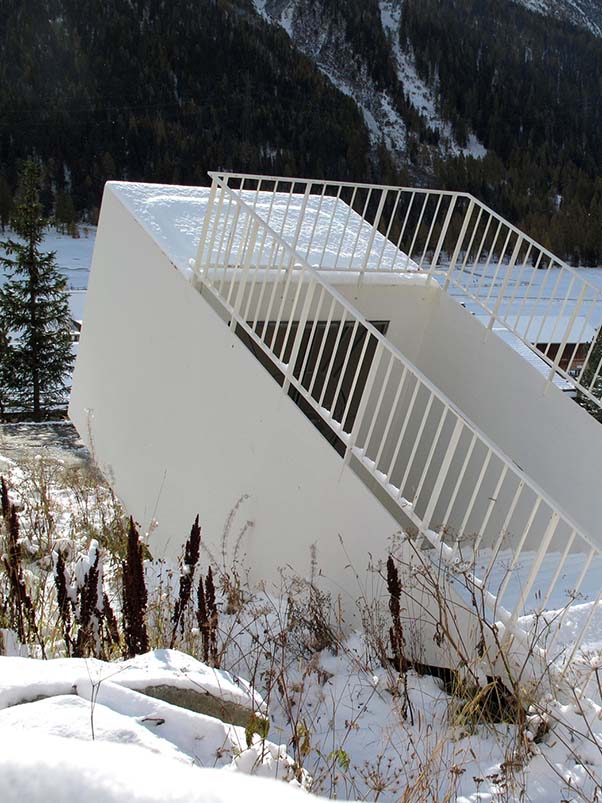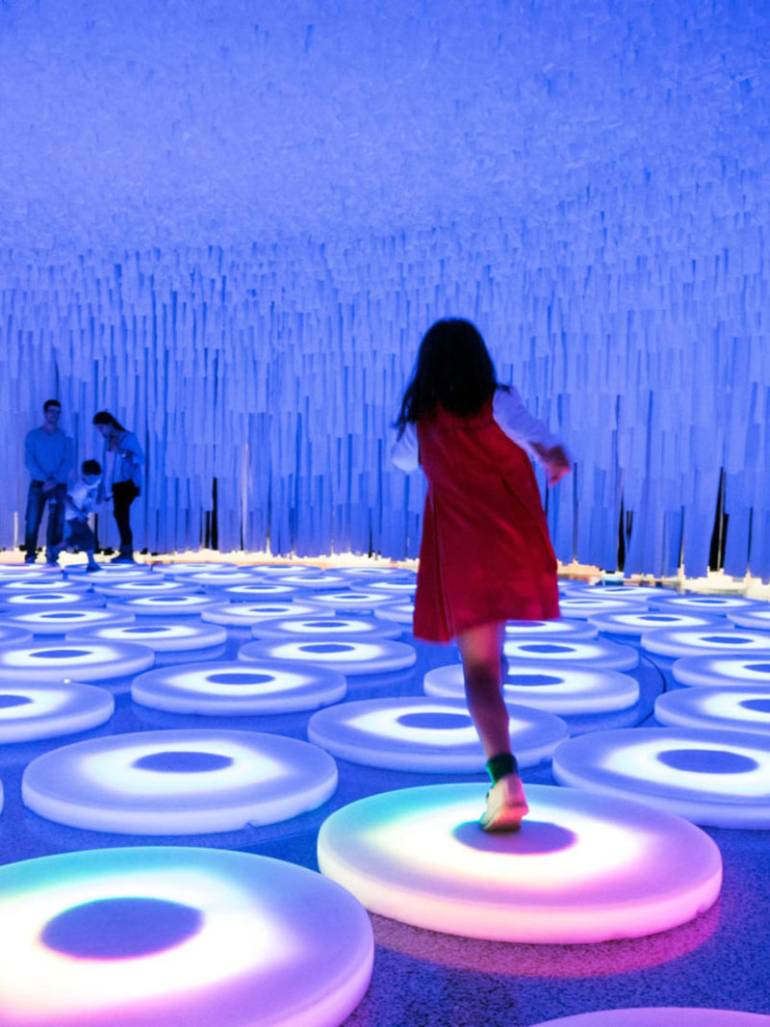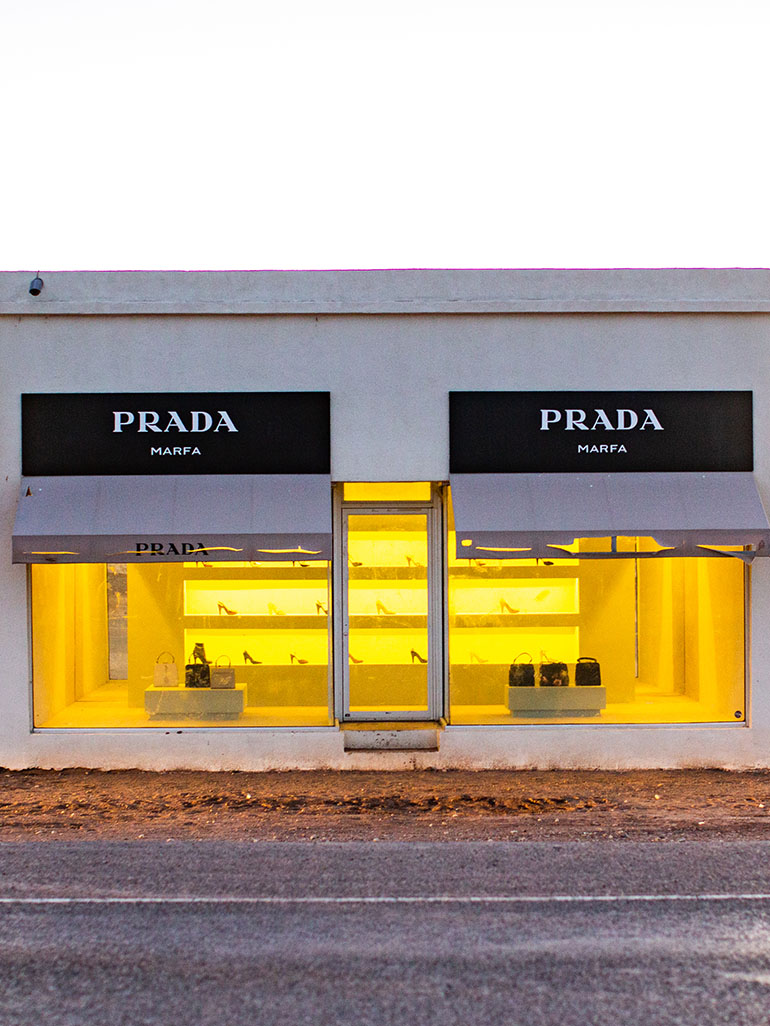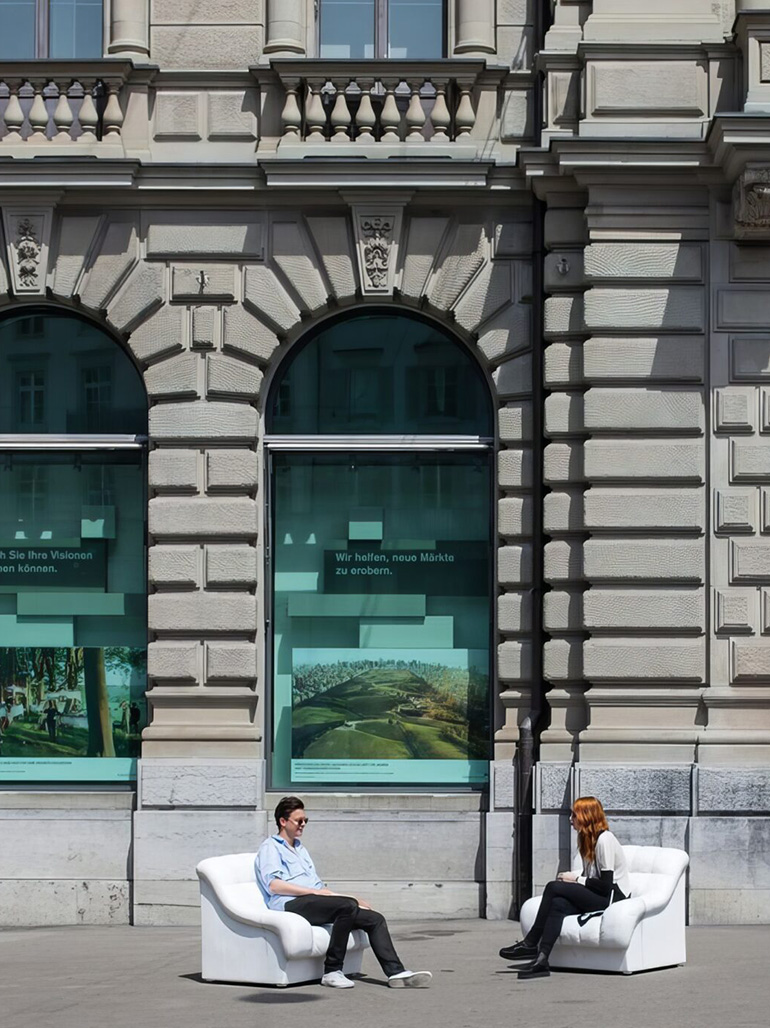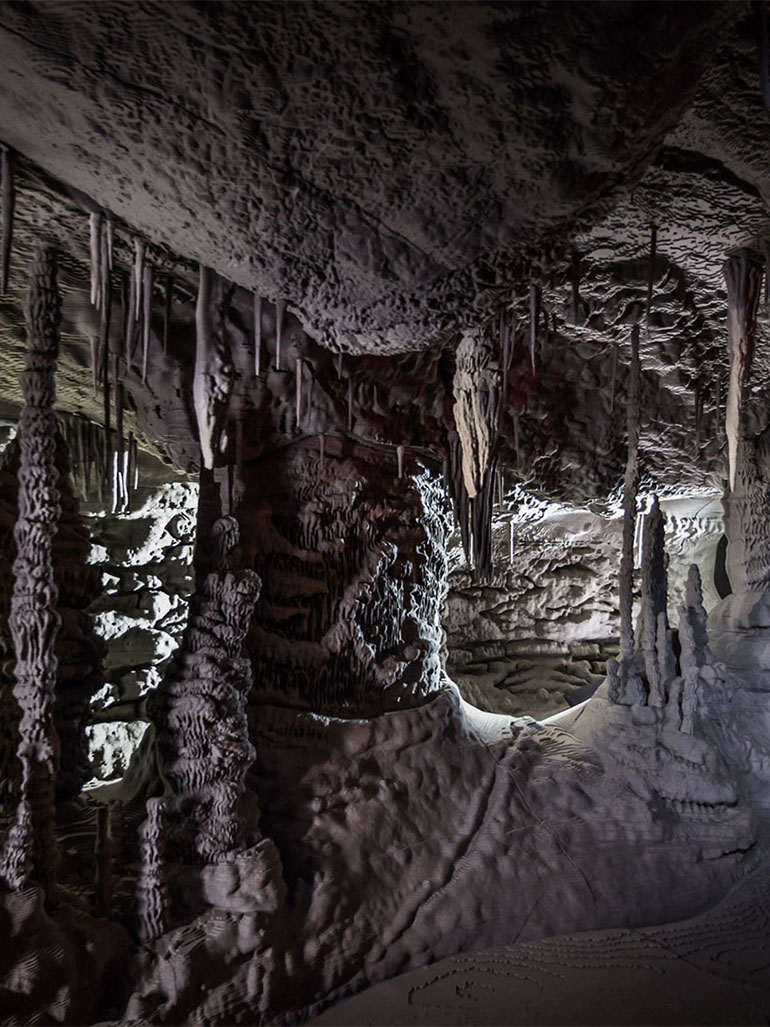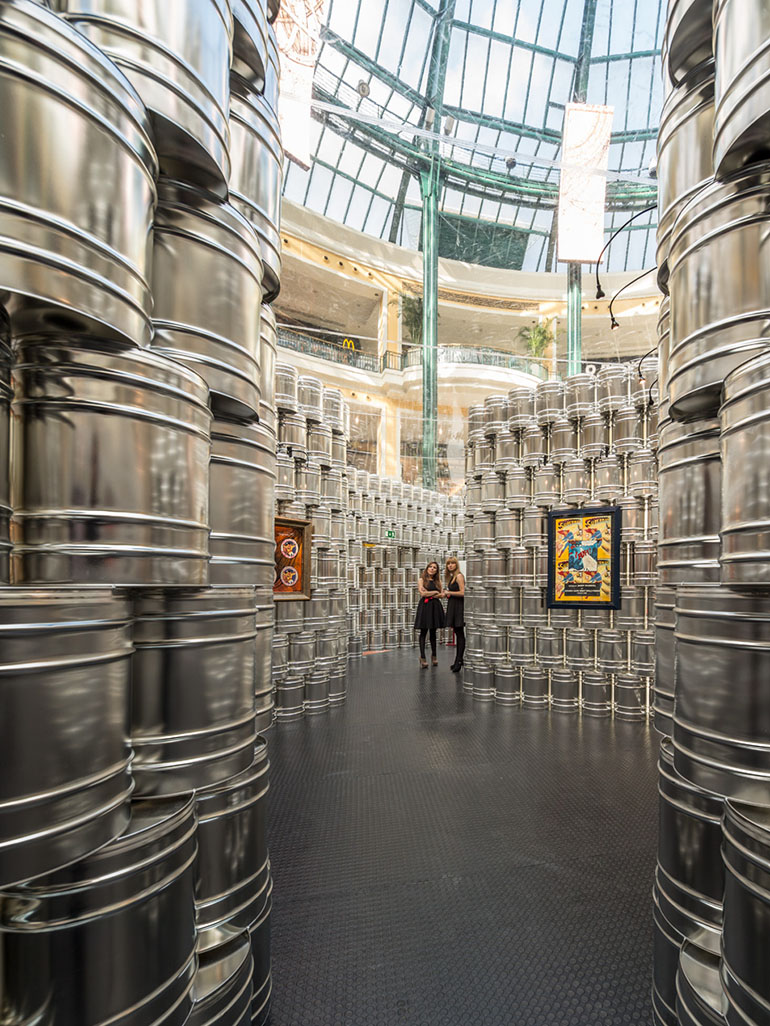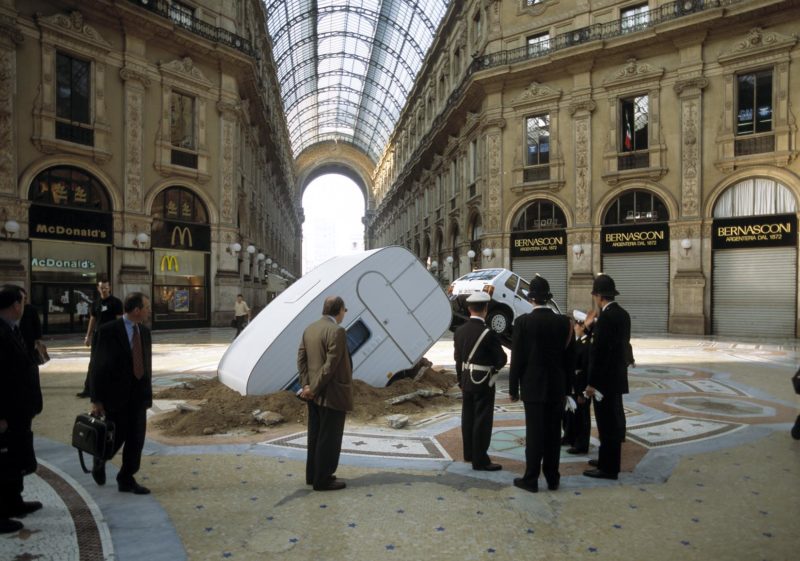
Introduction
Berlin-based artist duo Elmgreen and Dragset have carved their career out of fixation with objects and their settings and what happens when those particular objects are recontextualized in the name of art.
In this instance, the duo was commissioned by Fondazione Nicola Trussardi to create a large-scale installation for Milan’s quintessential shopping mall, Galleria Vittorio Emanuele. They opted to install a run-of-the-mill white Fiat Uno and a camper trailer in the middle of as if emerging from under the marble floor of the mall’s courtyard.
After a fantasy journey through the center of the earth, a white Fiat Uno and its caravan have emerged at the center of the Galleria Vittorio Emanuele, busting the floor and destroying its expensive marbles. In addition to its metaphorical meaning, the installation also paves the way to rare destinations.
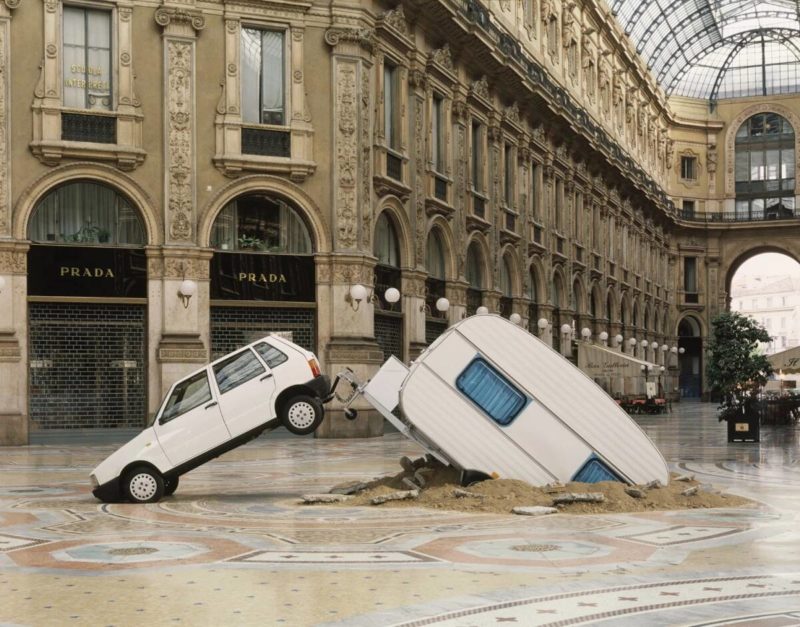
The conception of Short Cut
Elmgreen and Dragset were approached by Massimiliano Gioni, the artistic director at the Nicola Trussardi Foundation in Milan, to create an installation for Galleria Vittorio in 2004. The Galleria is one of Milan’s most important landmarks, built between 1865 and 1877 and named after Italy’s first king.
The people of Milan were still referring to the Galleria by its original historical moniker: Il Salotto di Milano, which translates to the living room of Milan. But realities were slowly shifting in terms of the landmarks around the Galleria.
Shortly before Elmgreen and Dragset started working on Short Cut, a McDonald’s store opened up in the area, and the glamour of the Galleria was slowly vanishing. The optimism of the past was fading, but the architectural power was still there. However, just like any other antiquated symbol of power, the Galleria needed to be reassessed and challenged before being repurposed.
Elmgreen and Dragset are known for incorporating the use of cars in their works, citing the words of sociologist Karen Lumsden:
The role of the automobile is shaping landscapes, social relations, gender roles, everyday routines, and urban life. The traffic largely dictates the design of space – both urban and rural – these structures and defines our experience of, and negotiations through, everyday life.
In the case of the Galleria, its arcades were expansive enough for a car to drive through, but they were fully pedestrianized. Even though people seem to pack cars just about anywhere in Milan, Elmgreen and Dragset felt that people might still stop in their tracks if a vehicle was parked in the middle of the Galleria, right in the middle of their historical monumental –Milan’s living room.
Alternatively, the two artists thought:
What if a car in a more violent, surreal gesture were to break through the precious tile flooring of the arcade, towing after it a camping caravan? A caravan can be seen as another kind of living room and possibly the direct architectural antipode to the grandeur of the Galleria, a symbol of cheap holidaymaking in the midst of the posh shopping mall.
Therefore, with various and occasionally inconsistent associations to caravans, cars, and camping in their minds, the two artists set out to create a sculpture in the center of the Galleria’s courtyard, incorporating these elements, but which would be beyond just a simply dismissed disruption.
Based on Elmgreen’s profound knowledge of automotive, the choice of the ideal car fell somewhat quickly on a white Fiat Punto. This model, made by the Italian brand Fiat, was considered at that time as the last successful model since the 500 model.
Next, the duo began to look for a caravan. They wanted something that is not too new but also not too old and perfectly fit the picture of a caravan that a kid would rather than represent the modern model in vogue. But as in many other works where they had to work with a particular object’s iconography, the artists could not find the right one. Therefore, they had to construct the parts and modify an old model closest to their shared imagination.
The two artists wanted to produce a moment of wonder in the center of Milan by creating an impression that the car had burst through the marble floor from the underground at high speed, tugging the caravan behind it.
Looking like it is frozen in time, the installation stood immobile and abandoned in the middle of scattered debris and soil – an alien object that simulated destruction of the historical surface it has just emerged from.
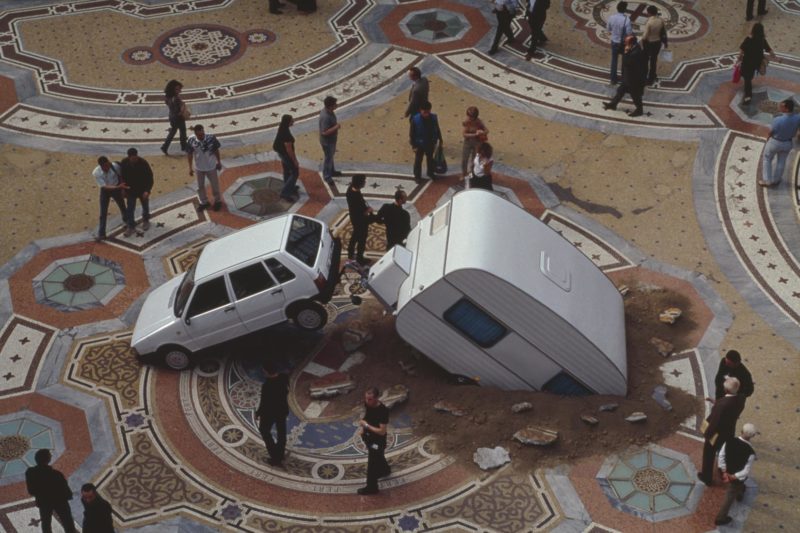
Reactions to the artwork
After the installation was complete, some people went nuts over the perceived damage to a historical floor, failing to realize that a trompe l’oeil effect was achieved by obliquely cutting off the van’s back, so it appeared as if its bottom part was still sunken underground.
The two artists collaborated with certified Italian mosaic restorers to reproduce parts of the famous patterns of the arcade, then broken them into jagged fragments and strewn them around the jutting caravan.
The perceptible destruction got people very angry, especially within the far-right party of Lega Nord (The Northern League). They claimed that the artists had insulted Italian culture and history – first by covering up and probably destroying the royal insignia in the middle of the floor, and secondly by poking fun of Italian driving skills.
But soon, Short Cut became a meeting point for many locals and visitors and as a backdrop of every activity, including wedding photos and dance performances. But the members of Lega Nord were not just having it, as they staged daily protests in front of the installation, by placing a round table covered in a white and red chequered cloth, on which they would serve a glass of red wine and pizza. But since they did not have permission for the protest, they had some run-ins with authority.
On the morning that the exhibition opened, the traffic police mistakenly left a ticket on the car because it was parked in an unauthorized area. At the same time, two members of the city council asked the installation to be removed.
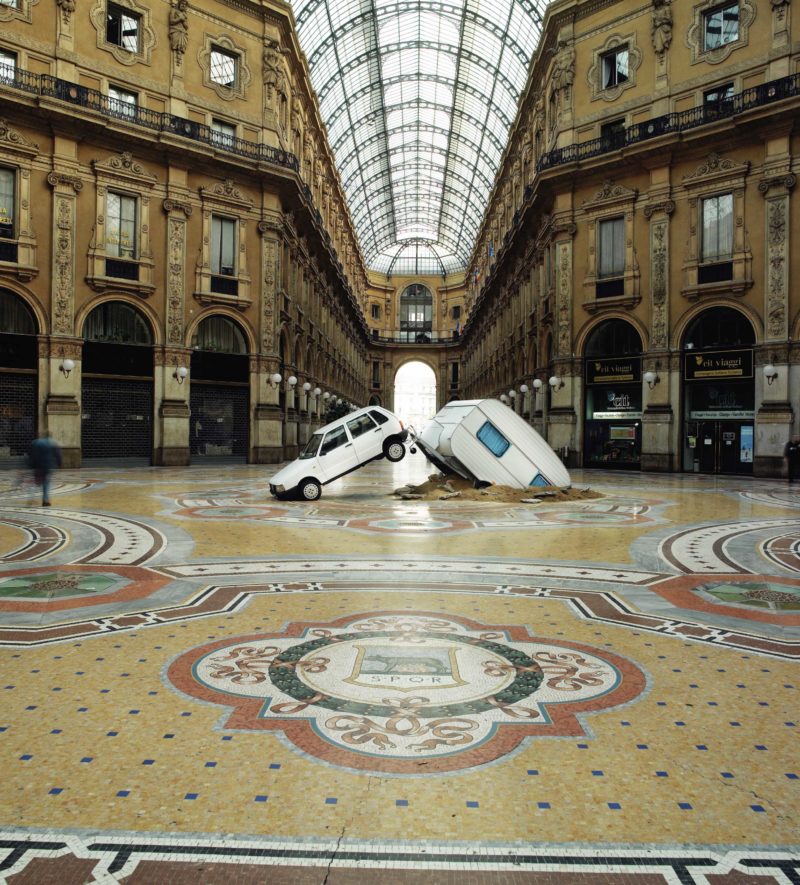
Analysis
The first audience’s impression is the car accident: the floor is cracked, and the car’s rear wheels are suspended. On further observation, the installation turns out to be a metaphor for global tourism and a symbol of the unstable nature of the modern world. According to the two artists, it describes a universe in motion that travels along never-ending, unpredictable paths towards fanciful destinations.
Short Cut is a fitting name of high-definition illusionism – it redraws the opinion of public architecture, opening its space to new interpretations and encounters. On the other side, the installation is also a place of struggle and sudden confrontation, which produces friction between the spotless beauty of structures and the immediate forces of day-to-day life.
Short Cut reverberates with images of protest and surrender; it undermines the earnestness of monuments with the primordial energy of nomadism.
With this installation, Michael Elmgreen and Ingar Dragset have designed a distinctive piece of art that questions the history and daily life of Milan. It penetrates one of the city’s monumental symbols, opening up to new trajectories to explore its urban space.
Final words
The two artists discovered a secrete path through the history of the city of Milan while at the same time mapping a new passage across to its present.
Short Cut uses the imaginary landscape of art and culture to create a conversation with the city of Milan. It questions the city’s day-to-day life as well as its long, storied history.
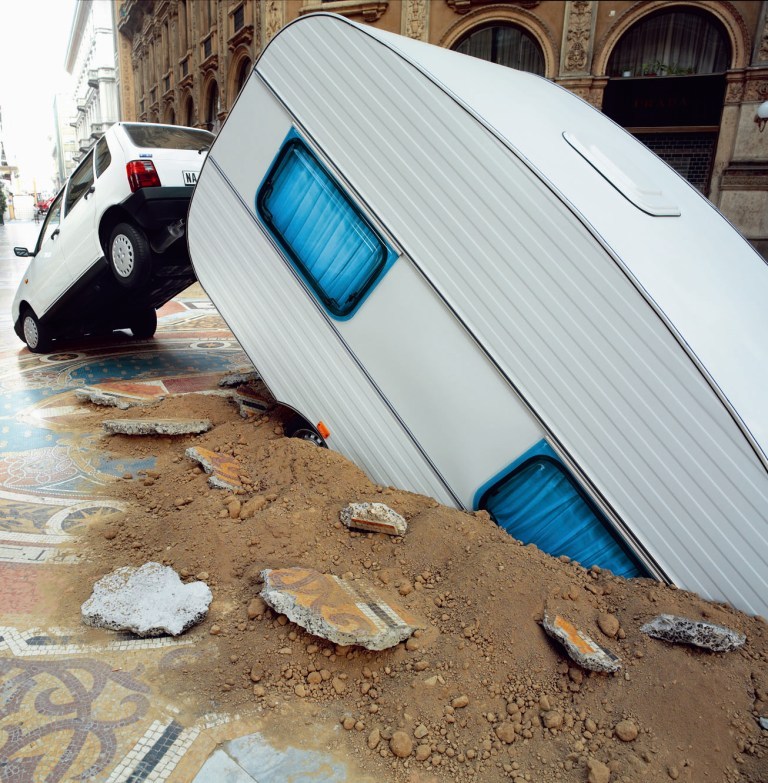
Video: Interview with Elmgreen & Dragset
About Elmgreen and Dragset
Michael Elmgreen (b. 1961, Copenhagen, DK) and Ingar Dragset (b. 1969, Trondheim, NO) live and work in Berlin, where they have been collaborating since 1995. The duo has taken part in major contemporary art events, exhibiting their work at international institutions such as the Museum of Contemporary Art in Chicago (2007 and 2005), the Serpentine Gallery in London (2006), Tate Modern in London (2004), Museum für Moderne Kunst in Frankfurt (2003), Palais de Tokyo in Paris (2002 and 2001) and Musée d’Art moderne de la Ville de Paris (1998). Nominated in 2000 for the New York Guggenheim’s Hugo Boss Prize, they were also featured at the 25th Bienal Internacional de São Paulo (2002) and the 7th International Istanbul Biennial (2001). Their work can be found in major collections. In 2009, they represented Scandinavia (Denmark, Finland, Norway, Sweden) at the Venice Biennale’s 53rd International Art Exhibition.
Short-Cut, MCA Chicago, 2005
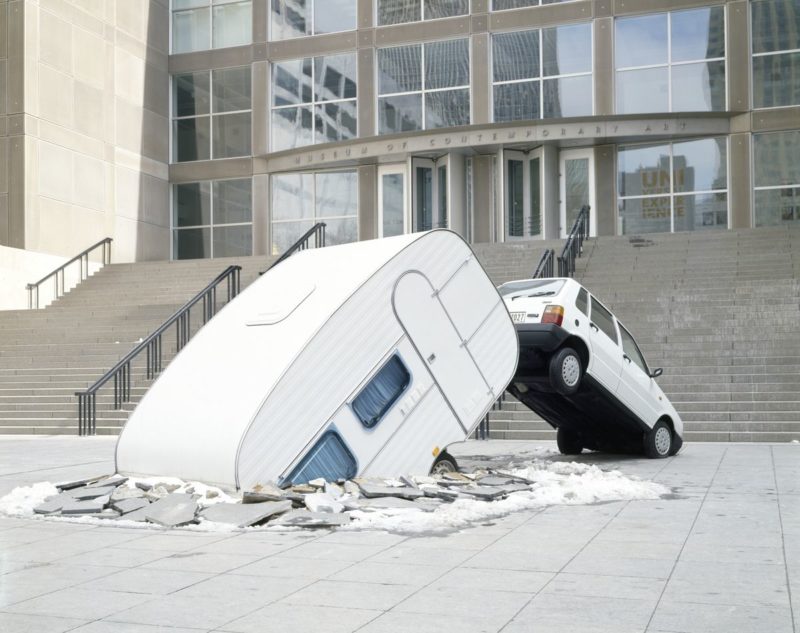
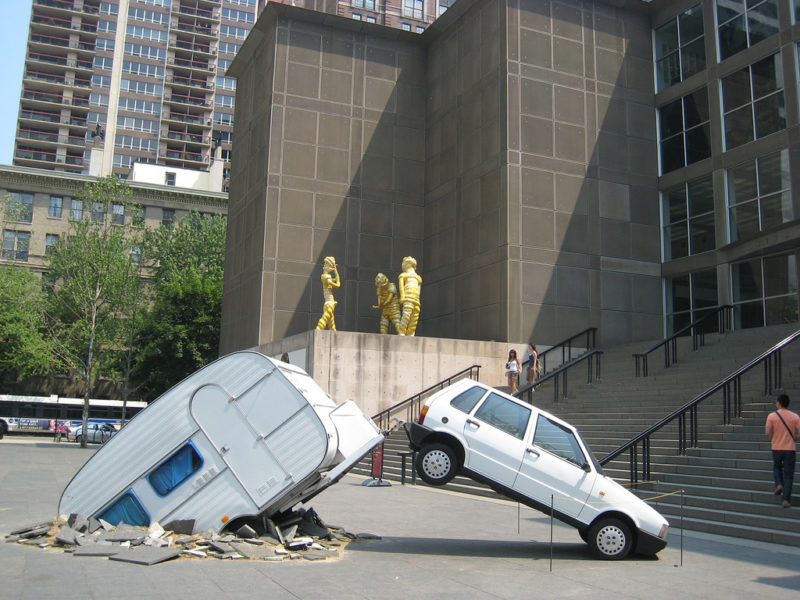
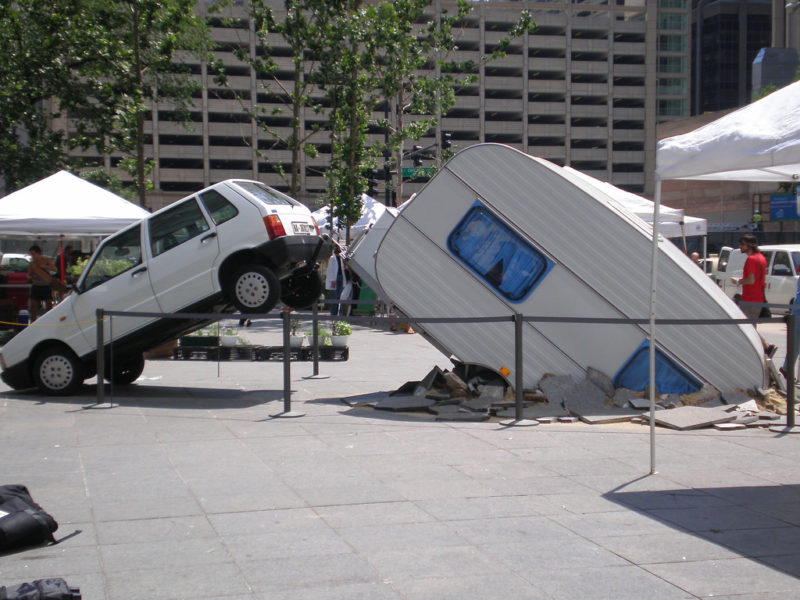
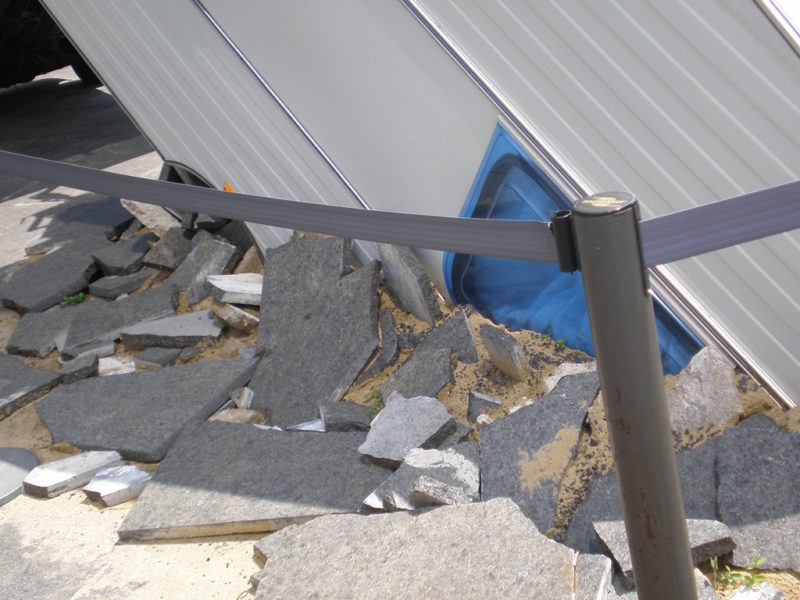
Explore nearby (Milan, Italy)
- Maurizio Cattelan's middle fingerPiazza Affari, Milan, Italy1 km away
- Carsten Höller's slidesPrada headquarters, Milan, Italy2 km away
- Anselm Kiefer's teetering towersPirelli HangarBicocca, Milan, ItalyExhibition ended (dismantled in 2015)6 km away
- Lucio Fontana's neon installationsPirelli HangarBicocca, MilanExhibition ended (dismantled in 2017)7 km away
- Martin Kippenberger's metro stationsZuoz, Switzerland139 km away
